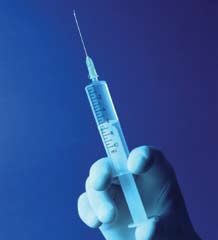Publication
Article
Pharmacy Times
News Capsules
Ontario, Pfizer Fight Colon Cancer Through Partnership
The fight against colon cancer recently became stronger. Pfizer has teamed up with the Ontario government to fund nearly $7 million in drug research for the disease.
Part of a government plan to create jobs in Ontario, the project incorporates researchers whose goal is to identify abnormalities in the genetic makeup of colon cancer cells, and from there, be able to create drugs that will hone in on them.
Seeking to tailor cancer drugs to the genetic profile of the patient, the project also is aimed at developing tests that would establish the type of tumor affecting a given patient. This would allow doctors to determine which drugs would be beneficial to different patients. To ensure the efficacy of the treatments, researchers are looking to develop tests to measure patients’ progress after receiving them.
The team effort is not only backed by Pfizer’s drug experts, but also capitalizes on pre-existing, ongoing research conducted at the Ontario Cancer Institute and Ontario Institute for Cancer Research.
Pfizer is contributing $6 million toward the efforts, with the Ontario government making up the remaining $900,000.

Leading federal agency officials joined with delegations from all 50 states recently in a special H1N1 Influenza Preparedness Summit convened by the White House to begin planning in earnest for the upcoming fall flu season and the new H1N1 virus.
“Over the course of coming weeks and months, we will move aggressively to prepare the nation for the possibility of a more severe outbreak of the H1N1 virus,” said US Department of Health and Human Services (HHS) Secretary Kathleen Sebelius.
As part of that effort, HHS is making $350 million available immediately in grants to states to help them prepare for potential vaccination campaigns, improve surveillance, and implement strategies to reduce individuals’ exposure to the 2009 novel H1N1 flu. The government also is committing $884 million to the purchase of 2 key ingredients for a potential H1N1 vaccine. The vaccine ingredients will become part of the pandemic stockpile for use if a vaccination campaign is necessary. In May, Secretary Sebelius directed approximately $1 billion to be used for the development of a vaccine and for clinical studies to determine dose level and assess the safety and effectiveness of potential vaccines. Communications about H1N1 and seasonal flu are now centralized on the government’s new Web site, www.flu.gov.
Medical Students Walk in Pharmacists’ Shoes at Johns Hopkins Hospital
An interprofessional education experiment at Johns Hopkins Hospital had both the students and the pharmacists

who participated learning something new. As medical students shadowed the hospital pharmacists and gleaned knowledge about the profession, the pharmacists became aware of students’ lack of understanding surrounding pharmacists’ role in reviewing drug orders, according to the American Society of Health-System Pharmacists (ASHP).
Aimed at fostering collaboration, the 2-week elective program for medical students consisted of experiential learning for the students, who were paired up with pharmacists and other clinicians for hands-on sessions. For the pharmacy portion of the program, students attended a 90-minute overview with a pharmacy administrator, and then split the remainder of their day between spending time with a point-of-care pharmacist and with a clinical pharmacist.
The participating pharmacists found that the medical students with whom they were paired had not previously been aware of how much pharmacist input is necessary in the drug order process, according to an ASHP report quoting Cathy Walker, preceptor of the program at Johns Hopkins. Pharmacists deemed the sessions valuable, also expressing a belief that medical students are traditionally taught self-reliance, which might discourage them from conferring with other clinicians instead of using other resources.
ASHP has plans to release 2 statements highlighting the importance of interprofessional collaboration. The program is in line with a resolution adopted last year by the American Medical Association in which the group touted such collaboration as “a priority of the American medical education system.”







